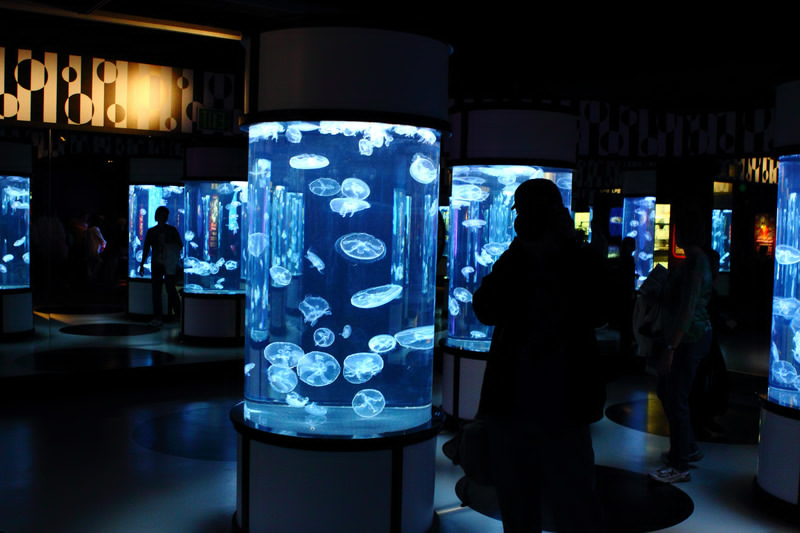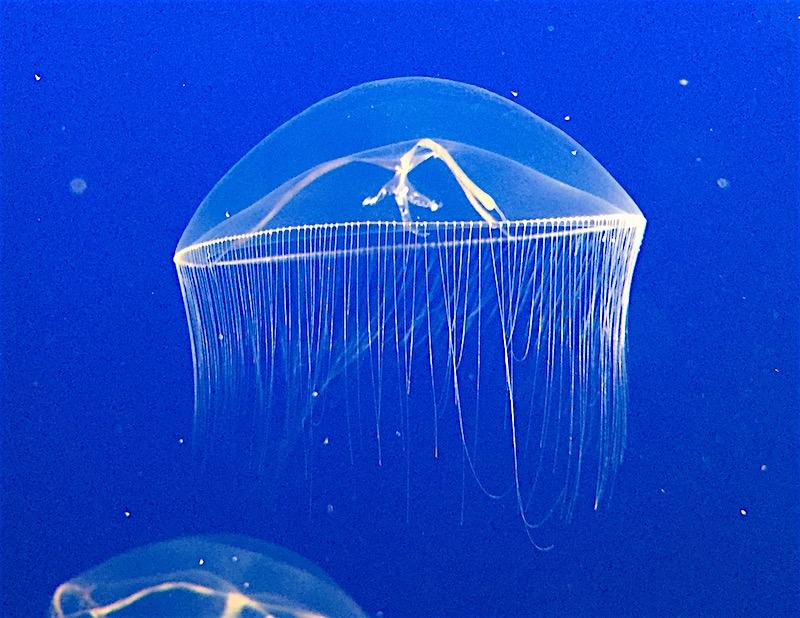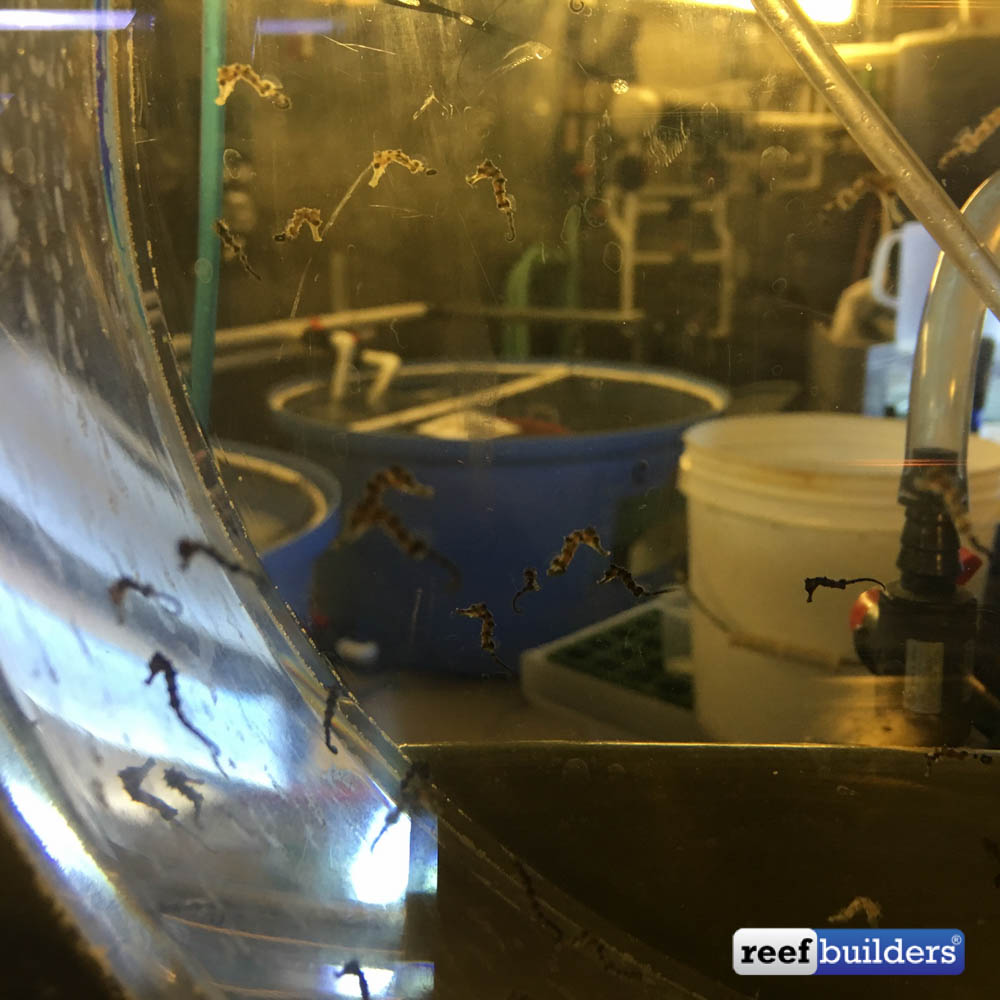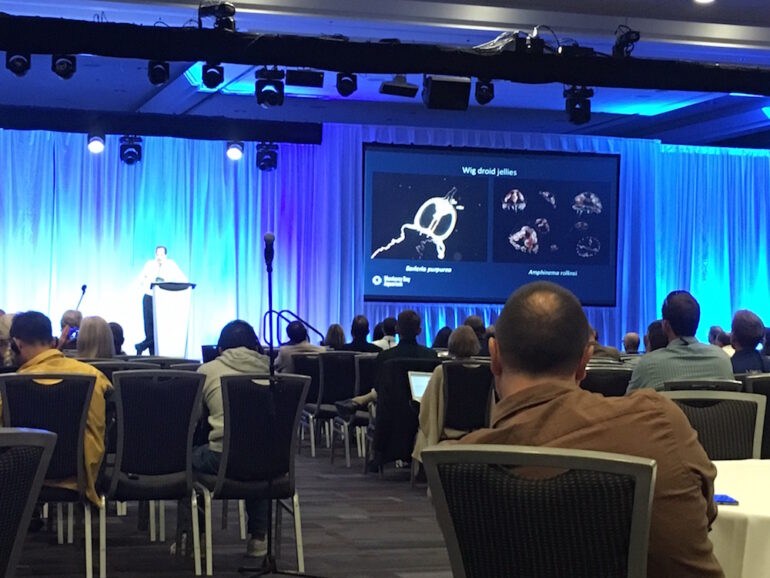International Aquarium Congress 2016 | DAY 1
Randy Hamilton, Vice President of Husbandry at the Monterey Bay Aquarium spoke to the history of propagation at the Monterey Bay Aquarium and how breakthroughs in Jellyfish, Cephalopods and Seahorse propagation has enabled them to maintain engaging displays for visitors.
Outstanding visitor experience at public aquariums starts behind the scenes with a commitment to research and development, great staff, volunteers, and advancements in husbandry and propagation. The sustainable culture of these unique marine species ensures quality and consistency in displays that inspire visitors and connects people to the ocean.
In 1992 the Monterey Bay Aquarium opened their “Planet of the Jellies” display and never looked back. This exhibit resulted in design innovations and new husbandry techniques that provided the basis for the aquarium’s award-winning permanent jelly exhibit.
In addition to developing husbandry methods for jellies that are now used by other aquariums and scientists worldwide, Monterey Bay Aquarium biologists have described the life cycles of five species of jellies displayed in the Aquarium: the cross jelly (Mitrocoma cellularia), the egg-yolk jelly(Phacellophora camtschatica), the flower hat jelly (Olindias formosus), the Pacific sea nettle (Chrysaora fuscescens) and the purple-striped jelly(Chrysaora colorata).

Jellyfish, Cephalopod, and Seahorses are often difficult to collect, can have extremely short life spans and require delicate professional care. Furthermore, when these animals are collected from the wild their age and health are unknown and maintaining these displays would be reliant on non-stop collection trips.
Through trial and error, the Monterey Bay Aquarium pioneered propagation techniques to complete the animals lifecycle ensuring these animals were always on display. This insurance of livestock allowed the creation of engaging exhibits showcasing the diversity of a species which become a selling point and draw for visitors to the aquarium.
The aquarium now features three unique exhibit halls featuring their cultured animals.
 The Jellyfish Experience
The Jellyfish Experience
The aquarium current jellyfish exhibit “The Jellyfish Experience” is a 7,000-square-foot exhibition featuring 16 species of jellies and corals. As the jellies are cultured at the aquarium exhibit features diffrence life stages of jellies including a microscopic look at developing jelly polyps.
The exhibits include elegant jellies, as well as visitor favorites like comb jellies, flower hat jellies and blubber jellies; plus occasional display of beautiful but uncommon species like the spotted comb jelly.

The Secret Lives of Seahorses
“The Secret Lives of Seahorses” exhibit more than 15 species of seahorses, sea dragons, pipehorses and pipefish. The exhibition highlights the fragile habitats in which seahorses and their relatives live.
The Secret Lives of Seahorses is one of the largest and most diverse exhibitions of seahorses and their kin in the nation. From their unusual physical appearance to their one-of-a-kind birth cycle, there’s nothing ordinary about seahorses.
Tentacles
“Tentacles”, the aquarium cephalopod exhibit features the largest and most diverse living exhibits ever created to showcase unique: octopuses, squid and cuttlefishes. As well, an egg lab in the tentacles exhibit showcases the aquarium’s groundbreaking work in rearing these incredibly complex animals.
Over the life of the exhibit, visitors to “Tentacles” might see any of the two dozen species that will rotate through a dozen living exhibits, from giant Pacific octopus to Hawaiian bobtail squid, the Wunderpus and others – including one of the world’s smallest squid and one of the world’s largest cuttlefishes.



